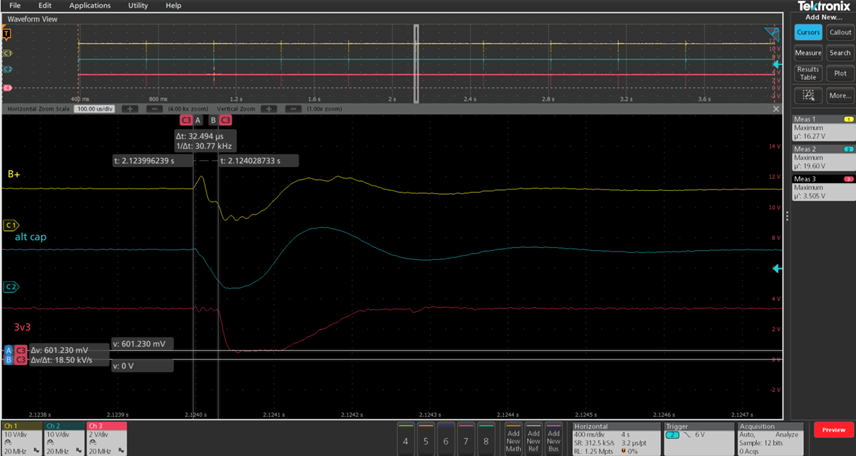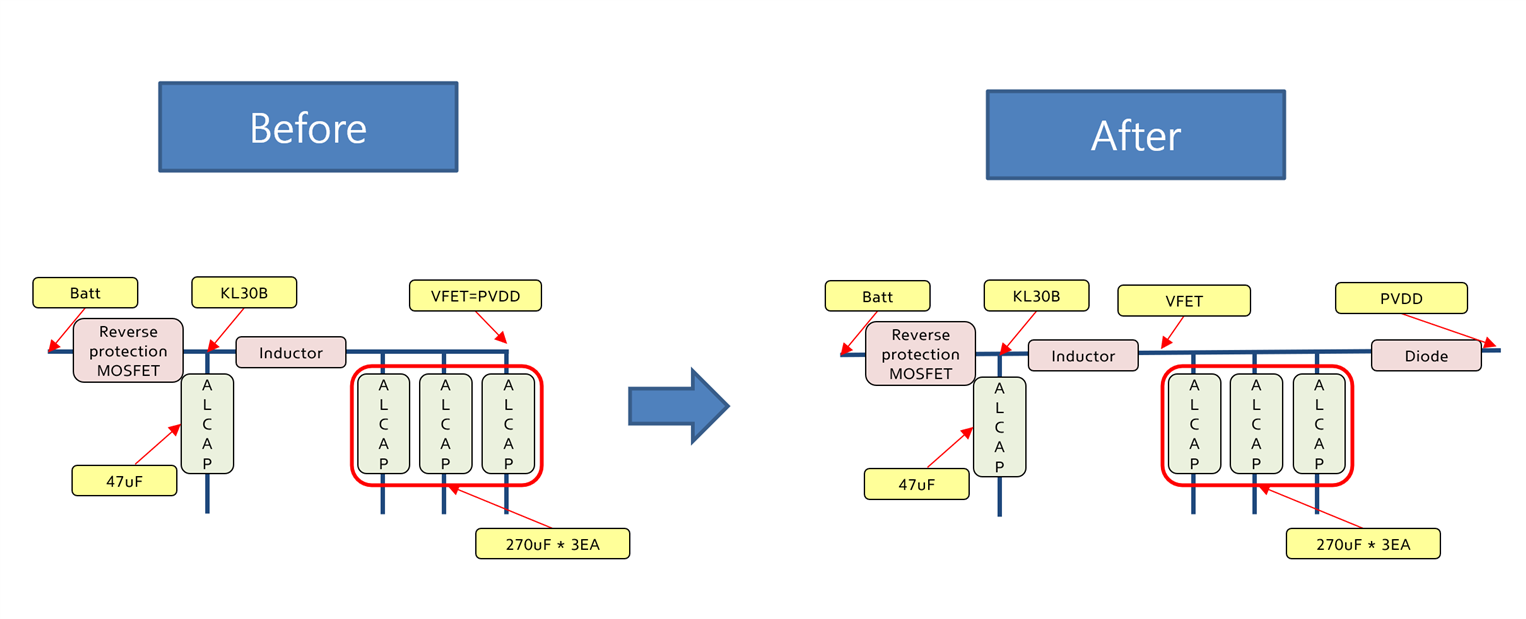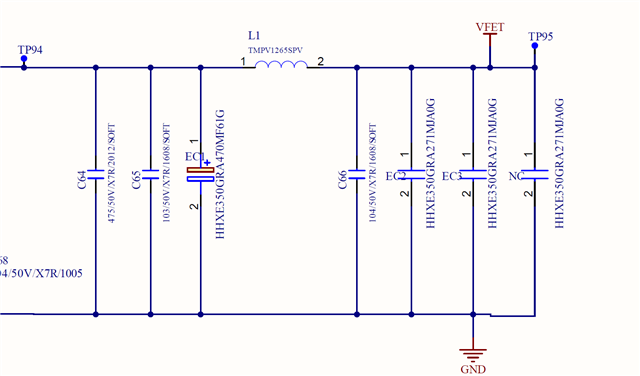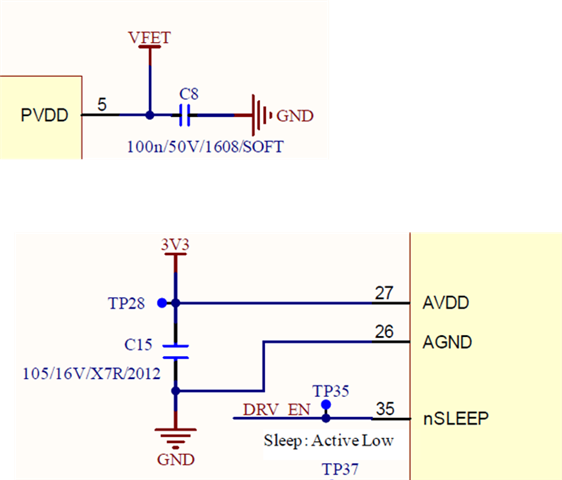Other Parts Discussed in Thread: DRV8329
Tool/software:
Hello
We have designed TI IC That MCU and Gate Driver (MCU : F2800156 / Gate Driver : DRV8329-Q1)
But, There is problem so please check and give solution
1. Situation
-
During the phase-to-GND short-circuit fault diagnostic test, the fault cannot be latched/confirmed.
-
Root cause: When the short occurs, the gate driver supply voltage drops momentarily, which causes the 3.3 V rail for the gate driver and MCU to sag.
-
As a result, the MCU (TI F2800156) resets and fault confirmation fails.
-
Gate Driver used: DRV8329-Q.
2. System Conditions
-
Please refer to the attached schematic.
3. Constraints
-
The MCU must sustain operation for the required hold-up time (refer to datasheet).
4. Attempted Solution
-
Added ~600 µF capacitor on the 3.3 V rail, but this is not a practical solution.
Request
Could TI suggest a practical solution to prevent the MCU from resetting under this condition?
Schematic and waveform data are attached for your review.
-
Input: 12 V
-
POW_SUP: Node after the battery → filter → reverse polarity protection FET





